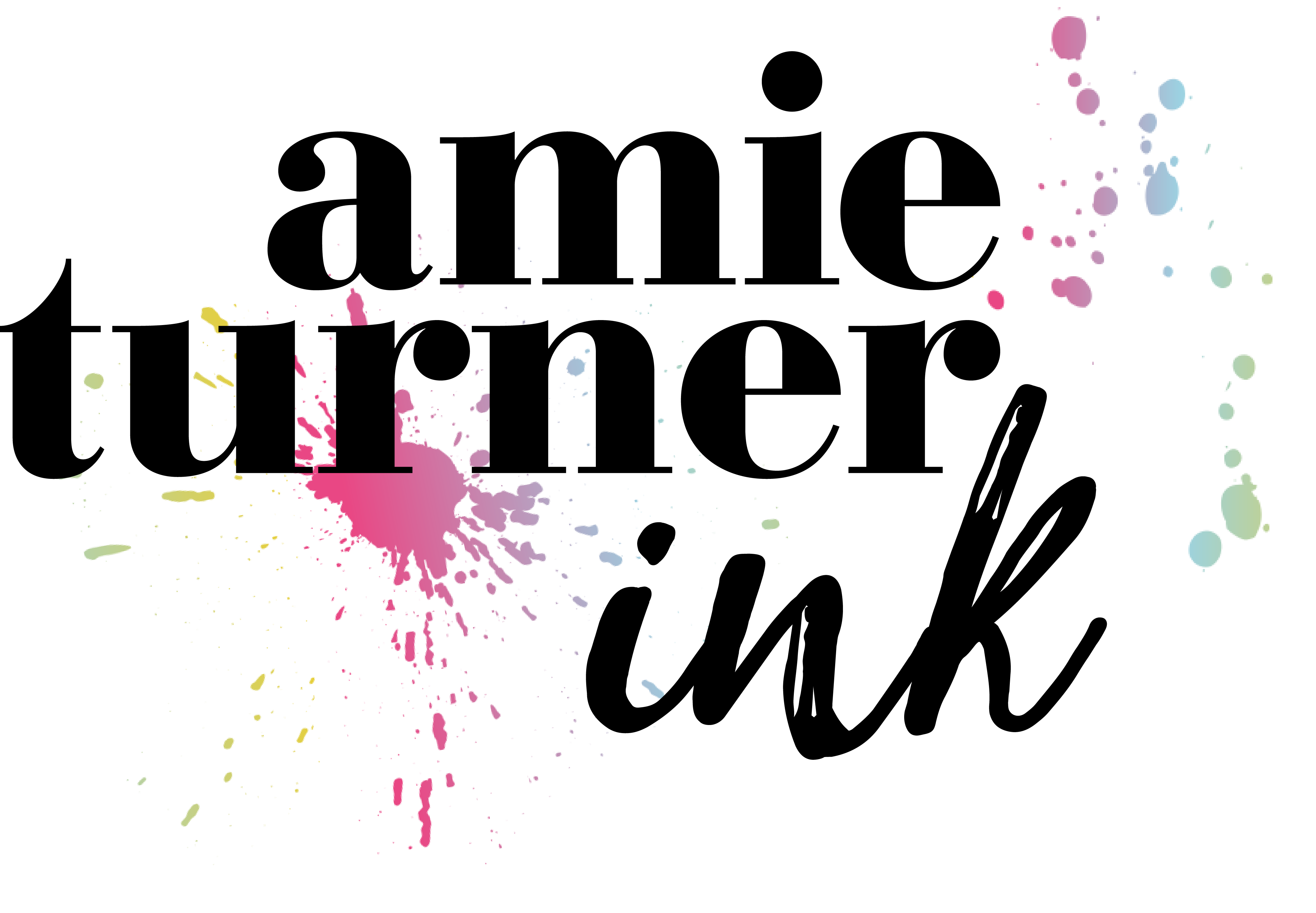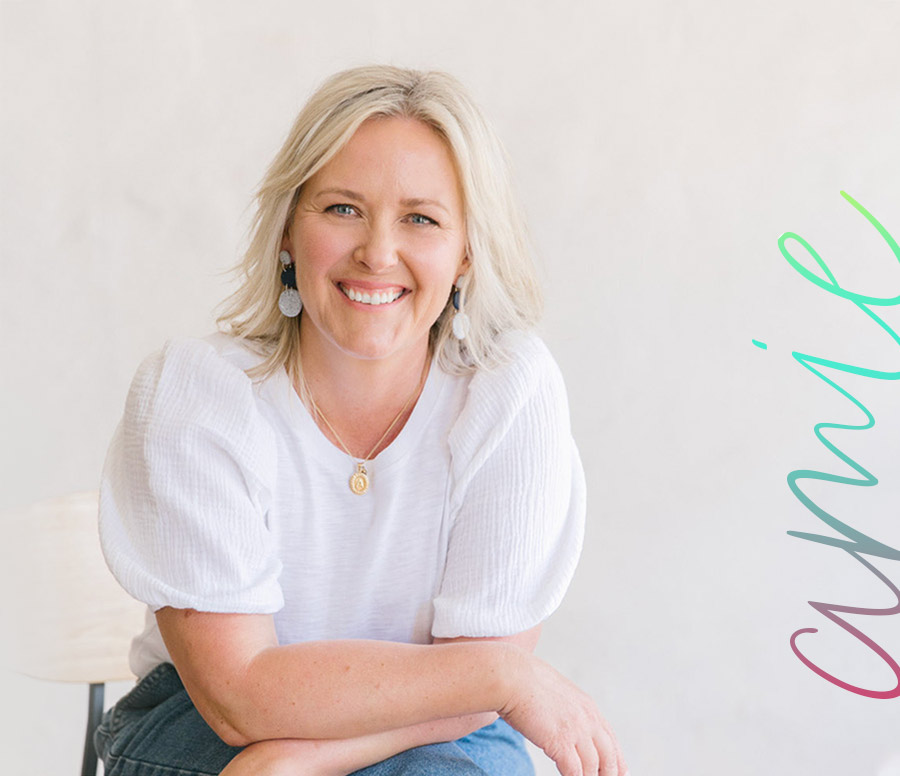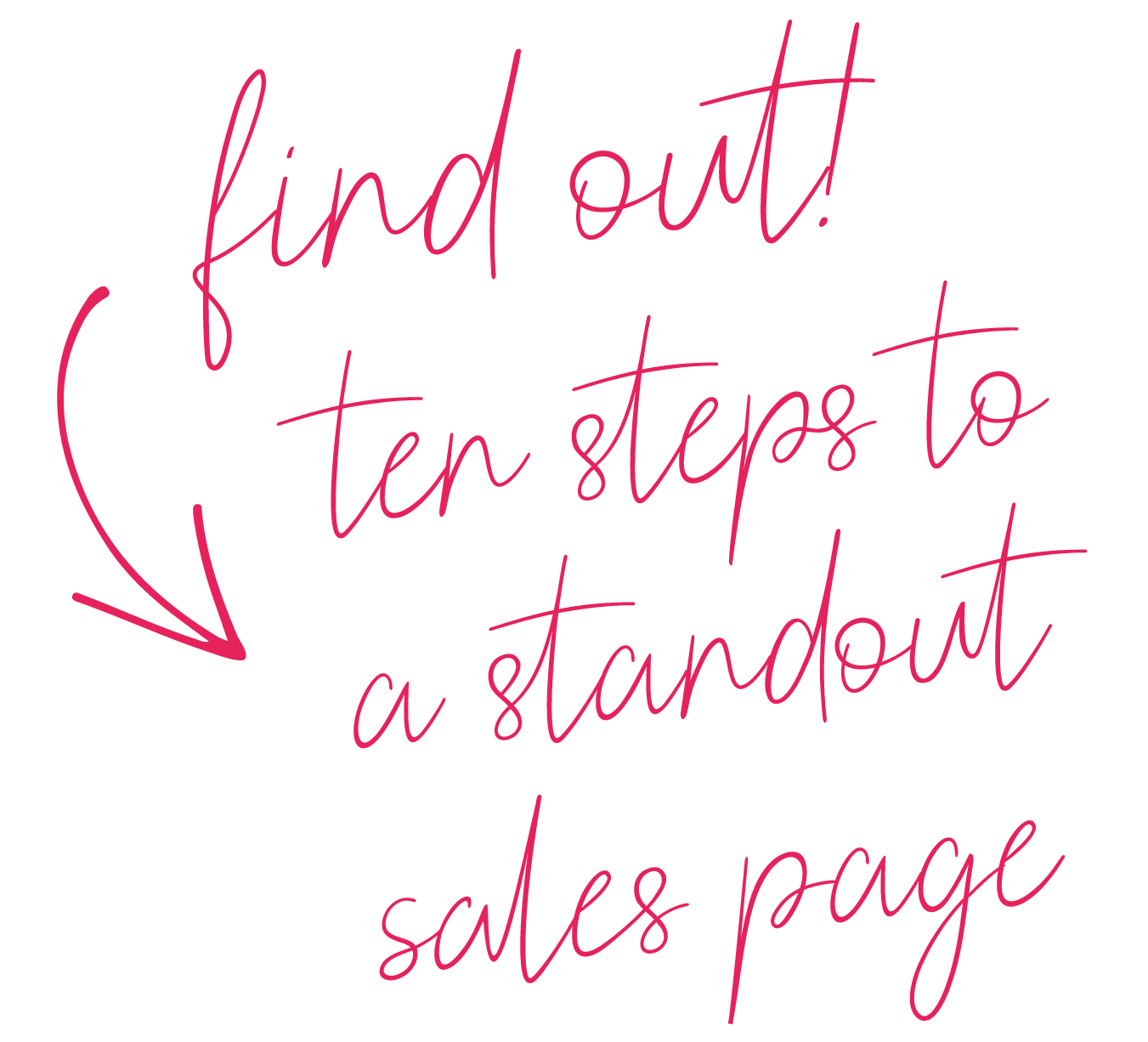How To Write Effective Ad Copy For Facebook

Cast your mind back to 2008. It was a simpler time when Flo Rida sang about apple bottom jeans, the first Apple iPhone was released and a certain ginger-haired president was still just a hotel mogul (oh, the good old days!)
It was also around the time Facebook really started to pick up steam in Australia. Goodbye, Myspace and it’s flashy profiles and ‘top 8 friends’ — now, it was all about Facebook in all its simple, pared-back glory.
Fast forward 10 years and it’s safe to say that Facebook has changed a lot. Yes, it’s still a social media platform where you can tag your friends in hilarious cat videos, but it’s also a powerful marketing tool for businesses.
“What, seriously?” you may be thinking. Because if you’ve ever posted something on your Facebook business profile without ‘boosting it’, you probably noticed you got about 3 likes — and one of them was by you.
Yep, it’s definitely not a case of ‘if you post it, they will come’ on Facebook. Because here’s the thing: Zuckers doesn’t really want you to use it as a marketing platform — unless you’re willing to shell out the cash.
That’s where Facebook ads come in! With some seriously powerful targeting options, these allow you to get incredibly specific about your target audience.
However, there’s one catch: in order to get a good return on your investment, you really need to nail your creative. That means using not only an eye-catching image or video but also clear and compelling Facebook ad copy.
The good news is, you don’t have to sell your left kidney to employ an expensive ad agency to do this for you. By focusing on the right things, you can DIY it and still make a massive impact.
Here are my top tips to write effective Facebook ads
Ask a question
The average person sees hundreds of Facebook ads per day, so in order to really stand out amidst a sea of advertisements for detox teas and inflatable lounge chairs, you need to — you guessed it! — hook em’ in. But how?
A great way to pique your target customers’ attention is to start your ad with a question. This question should be tailored to the specific audience you’re trying to attract. Bonus points if it’s timely.
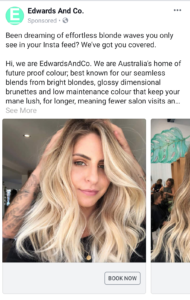
For example, if you’re a life coach, you may be trying to target women who are feeling motivated to set new goals in the new year — but need someone to keep them accountable. So, you could start your ad with:
“Are you ready to make 2019 the year you *actually* stick to your goals?”
Then, you can launch into how you can help them do just that.
Address their pain points
This brings me to my next tip. The whole point of Facebook ads (or advertising in general) is to provide a solution to your target audience’s problems. What are their pain points? What kind of things do they bitch to their friends about over margaritas? What are the gripes and grievances they deal with on a daily basis?
Before you even think about running Facebook ads, you should have a pretty solid understanding of this through market research.
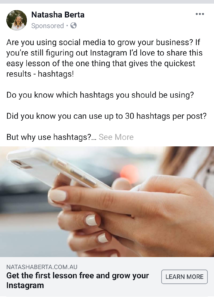
Once you understand what their pain points are, you can address them in your ads and present your business as the solution. Obviously, this needs to actually be true to work — there’s no point telling them you’re going to eliminate their wrinkles if you’re a pet food company.
Use social proof
As much as we hate to admit it, us people are actually more like sheeple sometimes. We’re hard-wired to experience FOMO: I’m sure even in the neanderthal days our ancestors couldn’t help but have a stickybeak if they heard someone else having a raging cave party.
If there’s something other people think is cool, we’re subconsciously more likely to believe it is, too. This is the concept of social proof and it’s an indispensable tool for Facebook ads. In fact, research shows that Facebook ads with some kind of social proof have 300% more conversions, and 50% lower CPAs and CPCs.
There are a few different ways you can use social proof in your Facebook ads. Firstly, by using snippets from glowing testimonials in your ads. By showing your target audience that your existing customers love you, it shows them you’re the real deal and helps with that all-important trust factor.
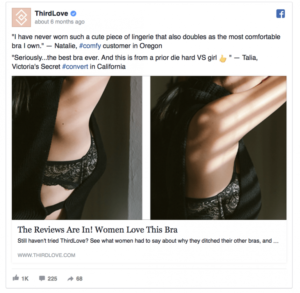
You can also use quantitative data, which is really just a fancy-schmancy way of saying numbers. Did you have a wait list of 300 for your maternity leggings? Did your money mindset coaching help a client earn $30,000 more last year? Have you helped more than 500 women overcome their body confidence issues? You’d be crazy not to use that in your ad copy!
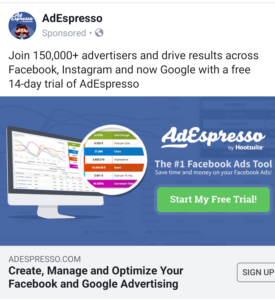
Another way you can use social proof is by using media coverage on your business in your ad copy. For example, if you have an e-commerce app and it was featured in Forbes (hey, we can dream!) you could include a link to the article and writing in your ad copy “Find out why Forbes is calling this app the future of fashion.” Just make sure your call-to-action links back to a way to contact your business — for example, opening up a messenger window that automatically prompts a conversation with you — rather than just opening the article (unless your goal is brand awareness.)
Tell a story…but don’t make it a memoir
We’ve all seen those Facebook ads that could rival a Lord of The Rings novel in their length and level of detail. You know the ones. They normally start with something like this.
“I was living in a dumpster, with only the stray alley cats to keep me company.
My last 5 dollar note had just been stolen by a man with no teeth”
Then, they waffle on for around 500-1000 words, before ending with something like this:
“Are you ready to:
💗 Turn your life around
💗 Live the freedom lifestyle
💗 Earn $20,000 per month
💗Work anywhere in the word?
Drop your favourite emoji in the comments to learn more!”
Now, telling a personal story can actually be an effective strategy in Facebook ads. If your target audience relates to your journey, it can help build brand trust, rapport and affinity. They may think “wow, if she’s like me and she can do that, maybe she can teach me to do the same!”
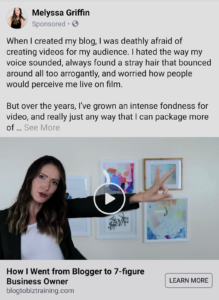
However, there’s a difference between telling a story in a Facebook ad and writing a memoir that makes Homer’s Odyssey look like a Little Golden Book. Not only will you lose their attention after the first few sentences, but these kinds of lengthy ads absolutely smack of multi-level marketing — which is fine if that’s what you do, but not so much if it’s not.
Research shows around 19 words is around the sweet spot for Facebook captions, which is around one short paragraph. It can be longer than that, but you really want to get the point of your ad across without them having to click the ‘see more’ button.
If you do decide to tell a story in your ad text, keep it short and concise and leave them wanting more. It’s important to pay attention to your headline copy, too. That’s the copy that appears in the link of your ad and research shows it should be no longer than 5 words.
Here, you can see an example of a clear, concise and effective Facebook ad. It contains all the key information, without waffling on for paragraphs.
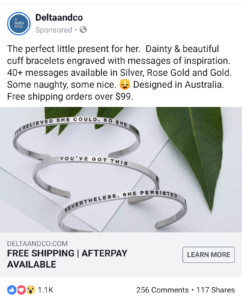
Still tearing your hair out over Facebook ads?
Book in a chat with me here.
Amie xo
Share the love!
WONDERING WHAT TO INCLUDE ON YOUR
SALES PAGE?
Download my sales page outline and follow the 10 simple steps to writing a standout sales page that sells.
By entering your info, you agree to receive emails and promos from me (Yay!). Per my Privacy Notice, your details are never shared (ew) and you can unsubscribe at any time (honestly, no hard feelings).
